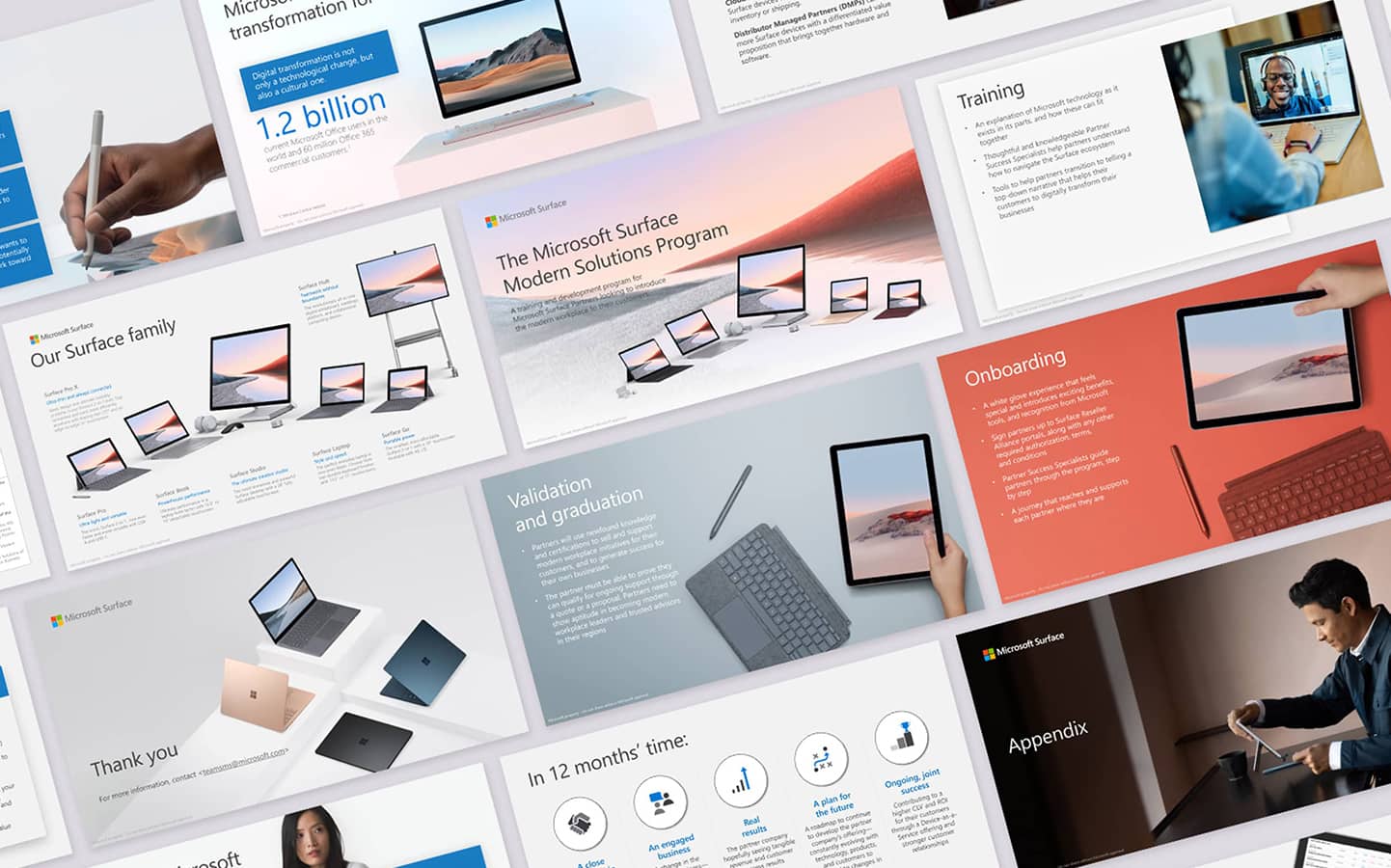Unlocking Channel Growth in the Era of the Ecosystem
Insights, tools and success stories to help you plan for growth in 2025
Introduction
By the end of this year, IT spend is projected to reach $4.94 trillion, a 6.2% increase on last year—with channel partners responsible for driving over 73% of that growth.
Still, many tech vendors and solution providers have yet to establish a clear partner strategy. But with enterprise buyers working with an average of seven different partners to deliver a single solution, it’s clear that a strong partner ecosystem is the way of the future. This shift not only makes the partner channel an untapped and exciting source of potential growth, it also makes it the cause of potential risk: without immediate action, tech vendors are in danger of getting left behind.
On this page we revisit sessions from our recent Partner Week, delving into practical steps and real-world examples to show how technology vendors can adapt their channel partner strategy to drive revenue through the partner ecosystem. Along with channel experts—including Jay McBain, one of the most respected thought leaders in the global channel—we explore successful co-selling, co-marketing, and co-innovation examples, while discussing the necessary shifts to seize this opportunity.
Contents
01. Unlocking Growth in the Evolving Channel Ecosystem with Jay McBain
02. Making Sense of the Modern Channel Tech Stack with Will Taylor
03. Partner vs Direct - How Can We Close the Chasm? with Norman Guadagno
04. Case study: Orchestrating The ServiceNow Ecosystem with James Hodgkinson and Maisa Fernandez
05. Strategic Approaches for MDF with Paul Spencer and Karl Connolly
06. Enhancing Partner Marketing Programs with AI
07. Bonus download - Partner Growth Toolkit
"It’s not just about managing relationships—it’s about building ecosystems, leveraging technology, and using creativity to drive meaningful growth.
Those who align strategy with action, empower their partners, and make every investment count will lead the way in this next era of channel success."
Ally Bancroft
Global Partner Solutions Lead, The Marketing Practice
Chapter 1
Unlocking Growth in the Evolving Channel Ecosystem
The channel ecosystem is undergoing a transformative shift, redefining how businesses collaborate, innovate, and drive growth. Traditional partner models are giving way to more dynamic ecosystems where flexibility, data-driven insights, and ecosystem orchestration are essential. As technology evolves and buyer expectations shift, the need for businesses to adapt their channel strategies has never been greater.
Success in this new era demands a rethinking of how organizations engage with partners. It’s about more than just transactions—today’s channel leaders must foster deeper relationships, harness the power of Partner Relationship Management (PRM) platforms, and align revenue operations (RevOps) and partner operations (PartnerOps) for maximum impact. The integration of AI and data analytics is proving to be a game-changer, enabling smarter decisions, greater scalability, and more effective partner engagement.
This is a pivotal moment for those working in the channel space. By embracing the opportunities of this evolving landscape, businesses can position themselves for sustainable growth and establish a competitive edge in an increasingly interconnected world.
Jay McBain, Chief Analyst and Canalys discusses the subject in more detail in his keynote session. (34 minutes)
Chapter 2
Making Sense of the Modern Channel Tech Stack
In today’s evolving channel ecosystem, the tech stack has become an essential foundation for success. Tools like Partner Relationship Management (PRM) platforms, data analytics solutions, and workflow automation systems are transforming how organizations manage partnerships. These technologies provide the clarity and efficiency needed to drive growth, measure performance, and showcase the tangible impact of channel programs.
A significant challenge for many channel leaders is demonstrating the value of their efforts. Without robust internal data and actionable insights, partnerships often remain a “black box” to senior executives. Solutions like Reveal and other partner tech platforms are helping to address this by turning data into actionable intelligence, enabling better decision-making and alignment across teams.
By leveraging these tools effectively, businesses can move beyond outdated, manual processes and focus on building scalable, efficient ecosystems. The future of partnerships lies in this integration of technology, data, and strategy—ensuring that every collaboration contributes to measurable growth and success.
In this session, Will Taylor, Founder at BDPaths, discusses how to navigate today’s channel tech landscape, uncovering the value of PRM, the power of data, and how RevOps and PartnerOps can unify business efforts. (55 mins)
Chapter 3
Partner vs Direct - How Can We Close the Chasm?
The disconnect between partner and direct sales channels has long been a challenge for businesses striving to maximize growth and efficiency. While many organizations claim to prioritize partners strategically, the reality often sees them treated as tactical afterthoughts. This misalignment creates a significant chasm that prevents businesses from unlocking the full potential of their partner ecosystems.
Bridging this gap requires a dual focus on strategy and execution. It starts with ensuring that the value of partners is deeply embedded in the organization—from the C-suite to frontline teams. Education is key, as is building processes and infrastructure that treat partners as integral to business growth, rather than as an add-on. Organizations must also reevaluate how marketing serves both audiences, integrating partner and direct initiatives seamlessly, from brand campaigns to revenue attribution.
In this video, Norman Guadagno explores the strategic shifts, cultural alignment, and practical steps organizations must take to close the chasm and transform partners into a true growth engine. (41 minutes)
Chapter 4
Case study: Orchestrating The ServiceNow Ecosystem
Orchestrating a partner ecosystem is a complex yet essential task for modern enterprises. The promise of ecosystems lies in their ability to connect partners, internal teams, and customers to achieve shared success. However, realizing this potential often requires overcoming significant challenges: fragmented tools, siloed processes, inconsistent partner experiences, and misaligned internal priorities.
For many organizations, these hurdles lead to confusion, inefficiencies, and missed opportunities for both partners and internal teams. Simplifying the partner experience, unifying disparate technologies, and creating seamless workflows are critical to ensuring partners can access the resources they need—when they need them—without navigating a maze of disconnected systems.
Achieving this requires more than just new tools; it demands a strategic approach that aligns business objectives, leverages scalable technology, and motivates all ecosystem members to work toward shared outcomes. When executed effectively, ecosystem orchestration can foster transparency, drive measurable impact, and build stronger partnerships.
In this video, Maisa Fernandez from ServiceNow and James Hodgkinson from 360 Insights share their journey to orchestrate the ServiceNow ecosystem. They explore the challenges they faced, the solutions they implemented, and the outcomes they achieved—offering practical insights for partner marketers and ecosystem leaders looking to drive growth through orchestration. (35 minutes)
Chapter 5
Strategic Approaches for MDF
Getting the most out of Market Development Funds (MDF) has always been a challenge for channel leaders. Too often, MDF is treated as a transactional budget line rather than a real driver of growth. But in today’s competitive partner landscape, the stakes are higher, and businesses need smarter, more impactful strategies.
The channel has changed. Partners are selling broader solutions, juggling more complex ecosystems, and facing greater pressure to prove results. Traditional uses of MDF, like sponsoring events or funding SKOs, don’t pack the same punch they used to. Vendors now need to shift gears, using MDF to fuel data-driven campaigns, drive account-based marketing (ABM), and align marketing with measurable sales outcomes.
In this video, Paul Spencer, Channel Chief at T-Mobile for Business, and Karl Connolly, CMO & CTO at Cell Hub, explore how MDF is evolving. From running targeted ABM campaigns to empowering partners with tools and resources that actually generate demand, they share practical insights on making MDF work harder and deliver real impact. (45 minutes)
Chapter 6
Enhancing Partner Marketing Programs with AI
Partner marketing is entering a new era, with AI at the forefront of driving greater efficiency, creativity, and scalability. For too long, partner marketers have faced challenges like resource constraints, complex ecosystems, and pressure to deliver measurable results. AI now offers opportunities to solve these issues and transform how partner programs operate.
The partner landscape has shifted dramatically. Vendors need to offer more than static resources or generic campaigns; they must enable partners with dynamic, data-driven tools that deliver real value. From automating lead enrichment to personalizing outreach at scale, AI is not just about efficiency—it’s about doing things better and unlocking new opportunities.
In this session, Ali Hussain, SVP of Strategy and AI at The Marketing Practice, and Graham Clarke, MD of Software and Services at Cisco UK, dive into practical applications of AI in partner marketing. They showcase examples like tools for smarter partner targeting, onboarding resources powered by generative AI, and lead enrichment workflows that turn hours of manual work into minutes. By focusing on specific use cases, they demonstrate how AI can enable partner marketers to work smarter and create meaningful impact across the partner lifecycle. (49 minutes)
Toolkit Download
Getting more out of your channel - tools & frameworks
Getting hold of practical tools and frameworks to help grow your channel partners can be hard. We’ve got you covered with our Channel Partner Growth Toolkit, full of useful tools and frameworks to create alignment across your business and build a scalable channel partner program.
Where we've made the difference
Our win-win approach drives proven business outcomes

Microsoft
Upskilling the channel opened new markets and delivered growth for Microsoft and its partners
A VIP partner selection, training and sales support program helped Microsoft Surface shift to selling ‘device-as-a-service’, delivering millions of dollars of revenue and 135% partner growth

Virgin Media O2 Business
Driving return on partner investment
A blueprint for partner marketing excellence that generated £8.4M in pipeline.
